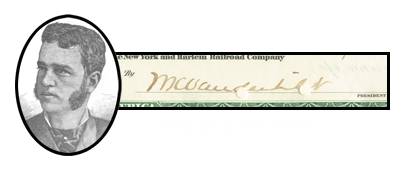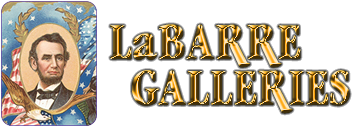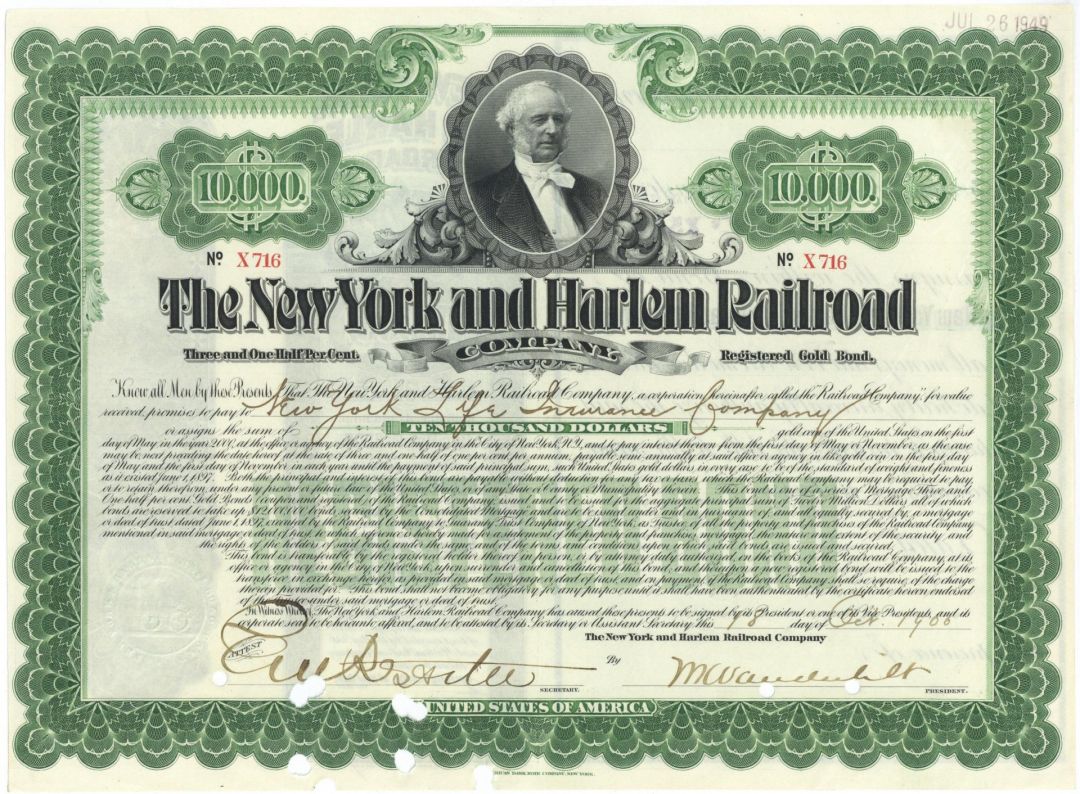William Kissam Vanderbilt signed New York & Harlem Railroad Co. $10,000 Gold Bond - 1901 dated Autograph Railway Bond - Also signed by Edward V. W. Rossiter
Inv# AG1331 Bond
William Kissam "Willie" Vanderbilt I (December 12, 1849 – July 22, 1920) was an American heir, businessman, philanthropist, and horse breeder. Born into the prominent Vanderbilt family, he played a key role in managing their extensive railroad investments. Upon his father's death, Vanderbilt inherited $55 million, equivalent to about $1.7 billion today.
In 1879, he took over P. T. Barnum's Great Roman Hippodrome, which was located on family-owned railroad property near Madison Square Park, and transformed it into Madison Square Garden, a venue that would become one of New York City's most famous landmarks.
Edward Van Wyck Rossiter was born on July 13, 1844, in Great Neck, Queens County, New York, to Lucius Tuttle Rossiter and Mary Wickes. He married Estelle Hewlett and together they had six children. Rossiter passed away on December 10, 1910, in Flushing, Queens, New York.
The New York and Harlem Railroad (now part of the Metro-North Railroad's Harlem Line) was one of the earliest railroads in the United States and the world's first street railway. Designed by John Stephenson, it was constructed in stages between 1832 and 1852, initially running from Lower Manhattan to Harlem and beyond. The railway originally used horse-drawn carriages, which were later replaced by steam engines and eventually by battery-powered Julien electric traction cars.
In 1907, the line's then leaseholder, New York City Railway—a streetcar operator—went into receivership. A subsequent receivership in 1932 led to the conversion of the line to bus operation under the New York Railways Corporation. Today, the Murray Hill Tunnel, once part of the line, carries a lane of road traffic, but no longer serves buses.
A bond is a document of title for a loan. Bonds are issued, not only by businesses, but also by national, state or city governments, or other public bodies, or sometimes by individuals. Bonds are a loan to the company or other body. They are normally repayable within a stated period of time. Bonds earn interest at a fixed rate, which must usually be paid by the undertaking regardless of its financial results. A bondholder is a creditor of the undertaking.











Ebay ID: labarre_galleries